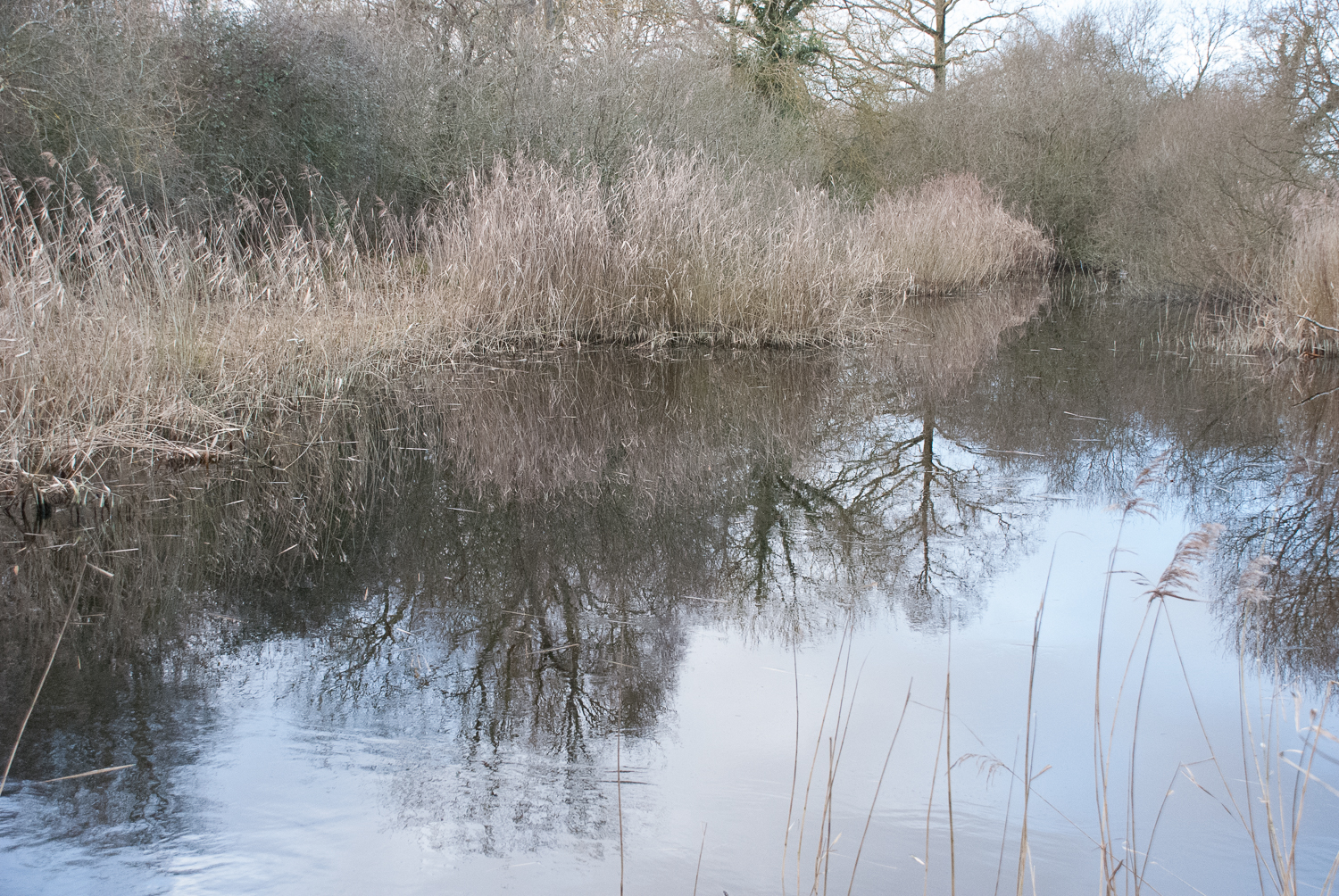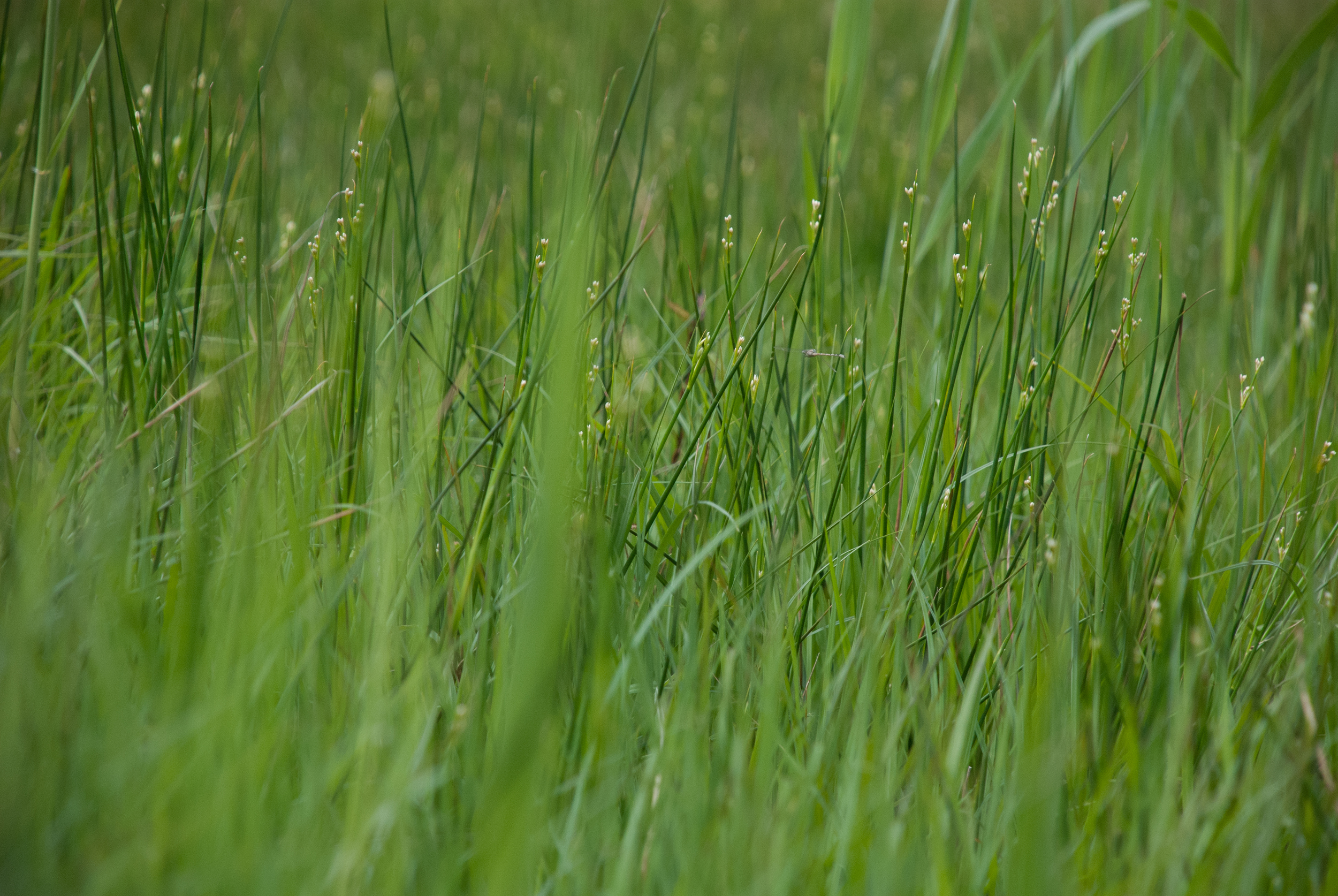I left home early in an attempt to reach the Fen by dawn. Winter mornings, especially if there is mist or frost, can be lovely. But this was a grey, drizzly January morning, so it probably didn’t matter that I arrived later than hoped.
In summer the fen felt closed-in, opaque and overwhelmingly green. You couldn’t see past the lush vegetation. Now, it feels as though the landscape has expanded and opened out. I can see through bare twigs, reeds and trees. Areas of open water that had been totally obscured by the reed beds, reflect light even on a grey morning. The colours are winter greys accented by acid green or yellow (lichen, moss), pale blue (water, sky) and warm golds or ochres, where the sun catches the leaves.
This time Sally and I explored the southern part of the reserve to the edge of Burwell Fen. Winter crops were pushing through adjacent fields – undulating, dotted lines of emerald green against indigo-black soil.
In places, vine-like plants have twisted and wound themselves together to create dense, matted coverings over fences at the edge of the paths. A little surreal. I particularly liked the contrast with the reeds behind.
We remain interested in the hides and found two new ones to explore. Once again I was interested in the way reflections in the windows disrupt or overlay the view. Taking photographs through rain-spattered glass resulted in some impressionistic images too.
But the main thing that excited me on this visit were the reflections in the water. These varied according to the light, the water quality and any disruption in the surface. My favourite was one ditch where some disturbance had turned the water a milky blue-green, the perfect background for the shadows and reflections cast by the willows and linear marks of the reeds growing out of the water and fallen branches.
In the afternoon the sun emerged and turned the surface of Wicken Lode silver. Trees and reeds on the opposite bank were reflected up side down while reeds in the foreground cut across these images. Monochromatic, linear images. Positive and negative space.
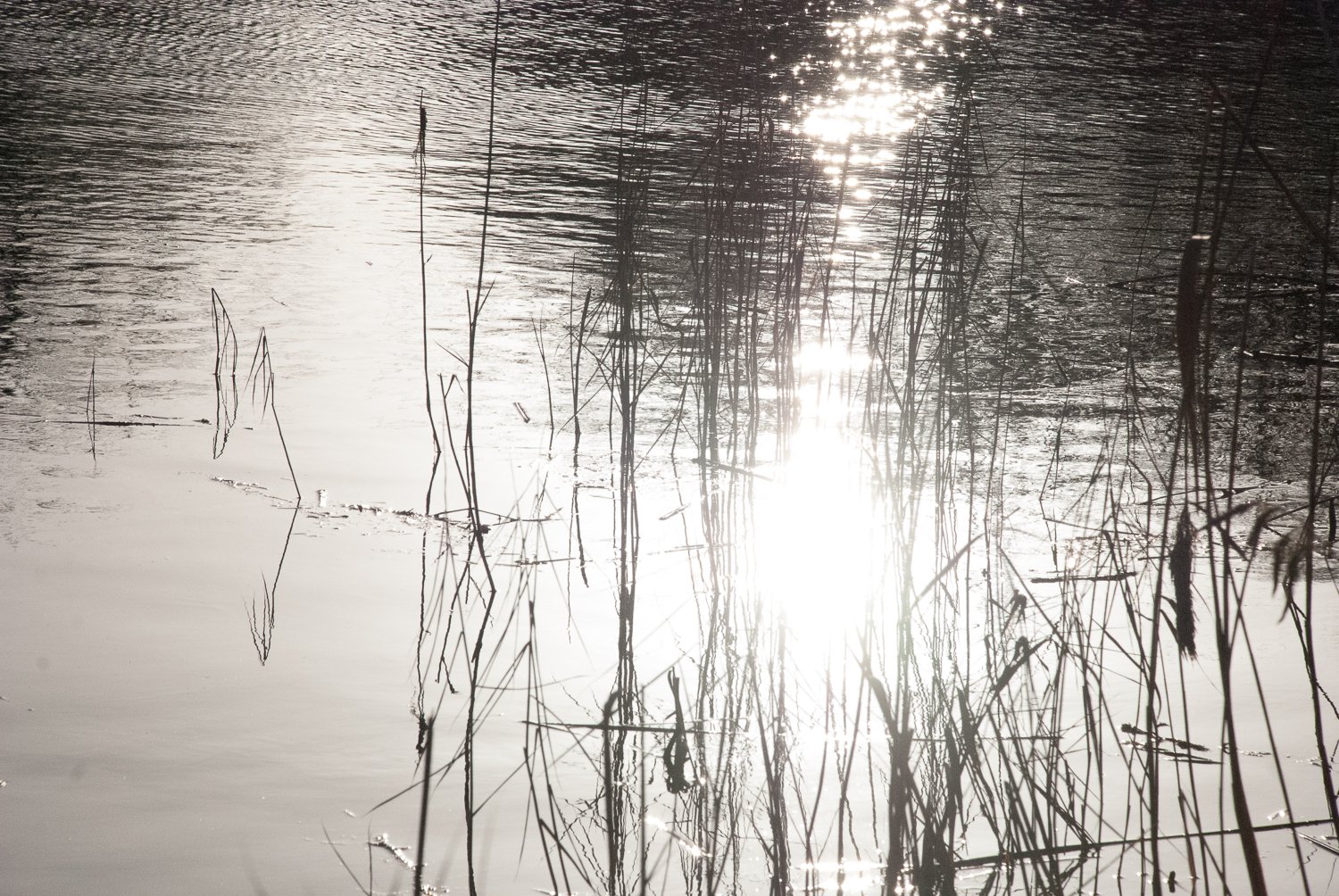
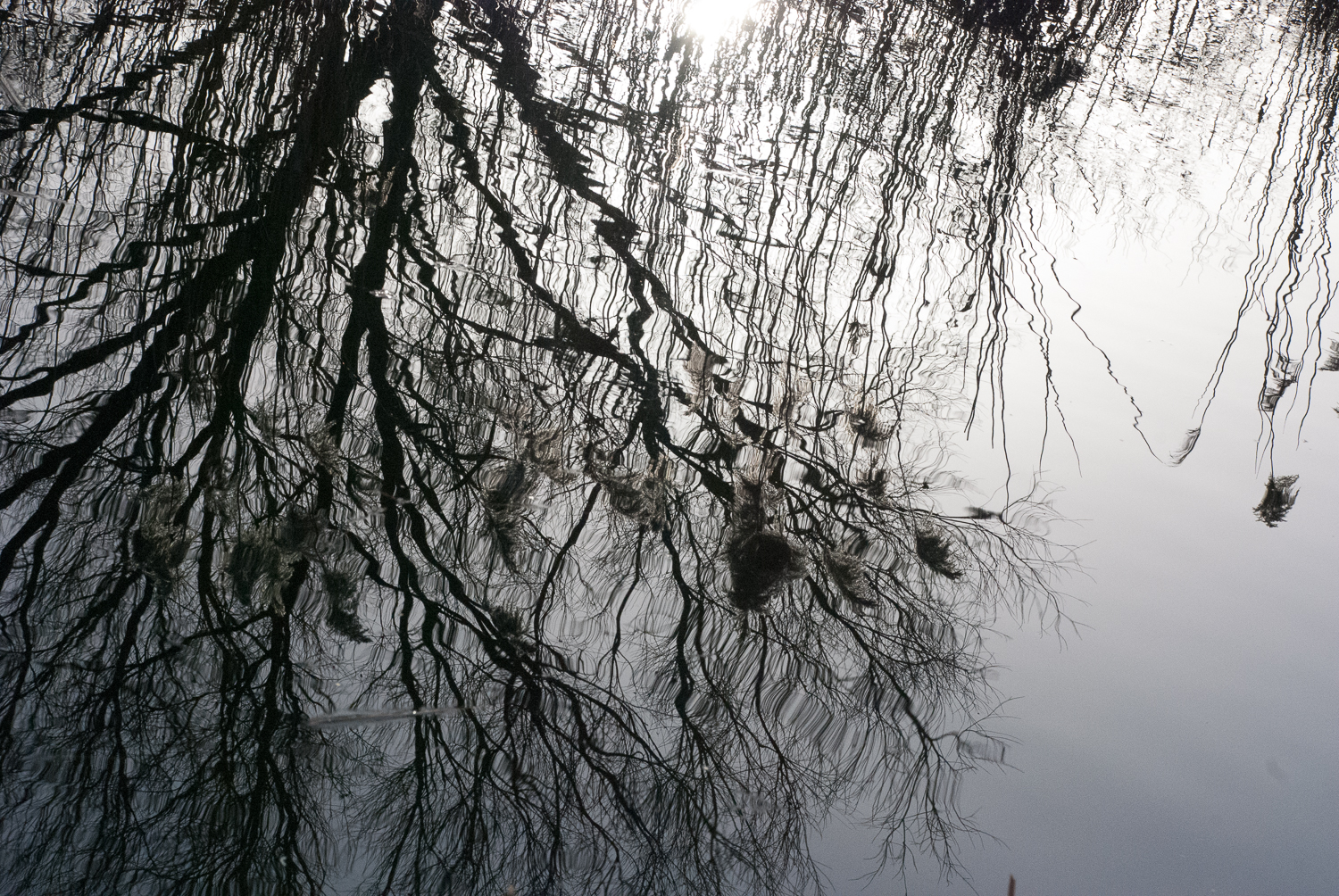
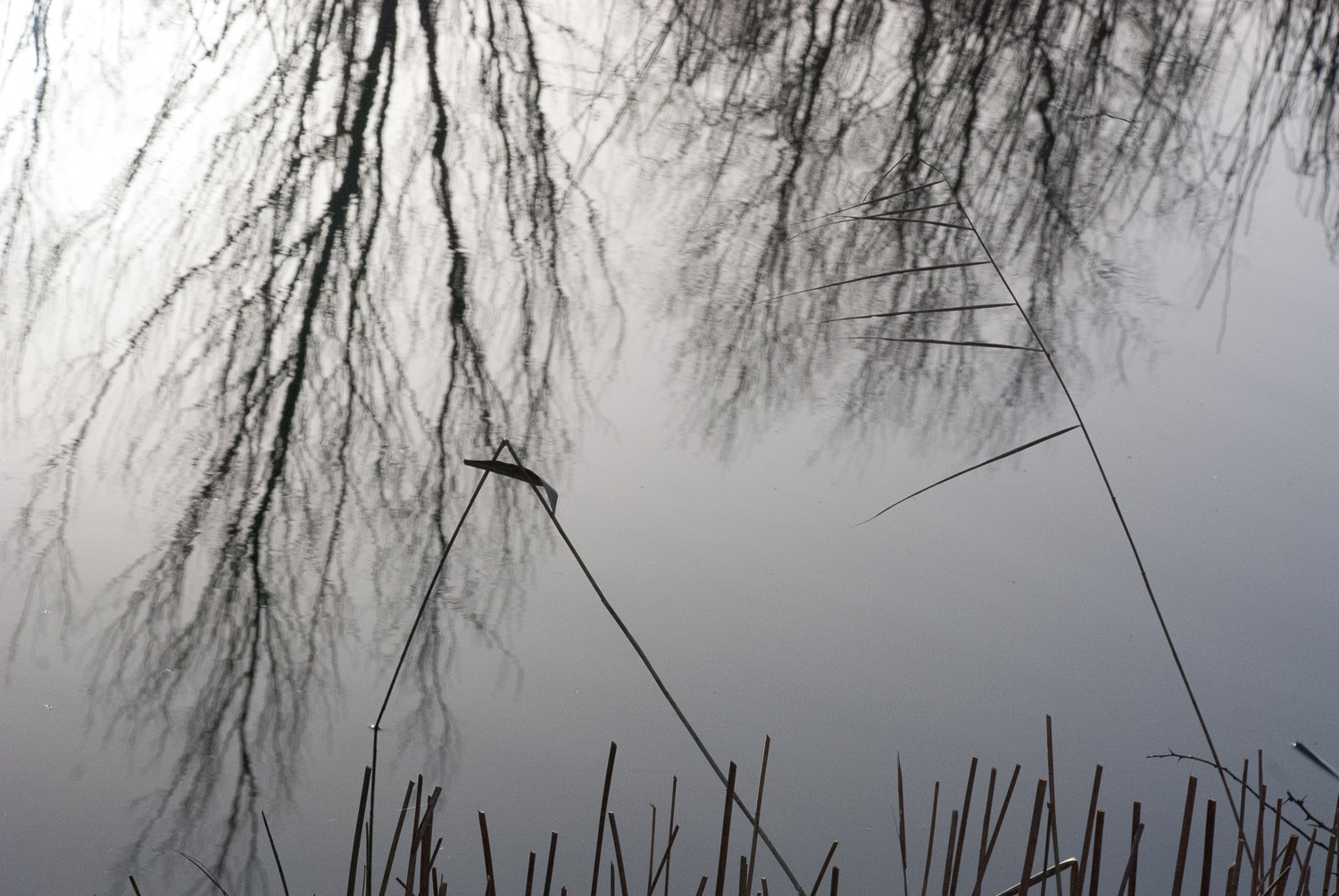

There is something about these images cast on the surface of the water but not being part of the water. The reflection can be so distinct but is essentially unreal, insubstantial, ephemeral. They are an indirect way of looking at the original. And a reversal or distortion of what's there. Some are so clear that my photograph could be taken for the original. But I like those where there is just enough disruption to make you question what you see.

